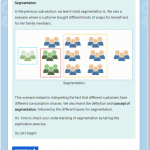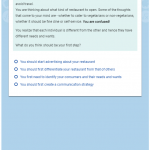The concept of learner engagement has been receiving global attention in recent years. Needless to say that the reason for such increased attention is the popularity of MOOCs and other online learning initiatives and the fact that learner engagement is viewed as an important component in assessing and improving the quality of MOOCs. The potential of these online courses/ programmes to provide educational access to all has generated significant interest among students, academicians and executives in corporate world. According to some research, more than 35 million people have enrolled in online courses in the last five years. The trend indicates that more and more learners will enrol for online courses and programmes in future. This popularity has made universities and institutions to invest considerably on developing, promoting and delivering such courses.
Though MOOCs are quite popular, one has to note an interesting point here and that is the dropout rates. Though thousands of learners enrol for the courses, the completion rate ranges from 5% to 10% only.
There are various reasons for such dropouts. Lack of time, boring course, less learner engagement are some of the reasons. Researchers and Experts have listed a number of reasons for such dropouts in their research article. A few of them are: (a) no real intention to complete, (b) lack of time, (c) difficult course, (d) lack of support, (e) lack of digital skill or learning skill, (f) bad past experiences, (g) unrealistic expectations (h) starting the course late and (i) learners taking the course only to browse content or to look at a particular module.
Though MOOC developers cannot do much about dropout due to issues related to learners’ issues such as lack of time or lack of support, they can definitely work towards improving learner engagement and improving learning experience. Research provides enough evidence for the strong positive link between higher learner engagement and retention in online courses.
What is learner engagement and why it is important?
Learner engagement refers to the degree of interest, curiosity, attention and passion that learners show when they are learning or being taught.
In online learning environment, engaging learners is quite a challenge. Learner engagement concept is based on the belief that learning improves significantly when learners are inquisitive, interested, or inspired, whereas learning tends to suffer when students are bored, dispassionate, disaffected, or otherwise “disengage”.
Is there a way to engage learners?
There are different ways to keep learners engaged in online learning environment. For instance, enabling learners to monitor their own progress motivates them to achieve course goals. Another example of engaging learners is to set achievable goals in the course. This encourages them to become self-motivated and independent learners.
Previous research that examined traditional online courses has suggested several factors that could influence student engagement. These factors include instructor presence, instructor humour, availability of feedback, choice of activities, extra course resources and active learning.
Let us see how have we tried to engage learners in IIMBx MOOCs.
What is IIMBx doing to engage learners?
IIMBx team consistently works towards improving learner engagement. All courses comprise lecture videos, text components and discussions and they act as core / standard learning components and not as additional components for engagement. Here we list few instances of learner engagement practices used in IIMBx MOOCs.
- Interviews: One of the most powerful techniques we have in digital learning is the ability to interview subject matter experts. Interviews can be considered as a different flavour that we provide not only to enhance knowledge but also to help in engaging the learners.


Image: Example of Interviews in IIMBx courses
We have expert interviews in courses such as International Business Environment, Healthcare in India: A Strategic Perspective, Customer Relationship Management, People Management, etc.
- Characters and interaction with them: Introducing ‘Characters’ in MOOCs helps learners have a kind of ‘break’ from watching monotonous lecture videos. These characters bring ‘joyful moments’ without deviating from the topic in discussion. The Lysa character in “Statistics for Business”, the Dude and Nerd character in the course “Predictive Analytics”, the Guru character in the course “Innovation and IT Management” and the Trigger and Clever character in the course “Financial Accounting and Analysis” are some of the examples of usage of characters in IIMBx MOOCs.

Image: Example of usage of Characters
- Animations (Video): Animation videos can act as a tool of learner engagement if they are well-made, relevant and crisp. Stories and Scenarios can be depicted in a much better way through animated videos. These kinds of videos help in grabbing the attention of learners and help them to connect with the core content. We have used these kind of animation videos in courses like Accounting for Decision Making, Organizational Design, etc.

Image: Example of usage of Animation videos
- Notes: By introducing ‘notes’, we try to help learners take note of points that learners feel important to learn, remember or recall later. All the notes taken can be accessed at one place making it easy for learners to learn effectively.
- Infographics: Sometimes it may be necessary to remember certain stages of a process or steps of a procedure or certain complicated task. It may be important to remember some data or statistics. Using mere text components or videos to illustrate these may not be sufficient. This is where ‘infographics’ help. Infographics are graphic visual representations of information, data or knowledge intended to present information clearly. They help in simplifying the information in a visually engaging way in order to attract and inform learners. These infographics are particularly useful for learners who are less likely to remember text-based walkthroughs. It not only simplifies complex concepts or ideas and helps increase retention but also helps digest information and make your course content interesting. A number of IIMBx courses contain infographics to depict a certain content, share knowledge and provide additional information. For instance, infographics are used in courses such as “Healthcare in India: A strategic perspectives”, “Customer Relationship Management”, etc.

Image: Example of Infographics in IIMBx courses
- Self-Assessment Questions: Self-assessment questions play a significant role as a learning tool in MOOCs. These are questions designed for learners to assess their own understanding of the concepts. Self-Assessment Questions have lots of benefits. They encourage learner involvement and responsibility. They help learners to think about their own learning and learning progress. In addition, when learners are able to analyze their own progress, they can find ways, or strategies to make improvements.
All IIMBx courses have self-assessment questions. These questions are not restricted by number of attempts. Hence learners can find out the correct answers. Our course survey indicates that learners find these self-assessment questions quite useful.
- Audio Podcast: Some of our IIMBx courses contain audio podcasts as learning components. Audio podcast is a digital audio file that is created, shared and heard. They are great alternatives for delivering course content. These podcasts can hugely benefit auditory learners and help them in their learning. A big advantage of audio podcast is the attention it attracts. While text and video require learners to pay full attention in order to consume the content, audio podcasts can be used to learn concepts without much difficulty. Learners need not sit at one place to consume the content. They can listen to the audio while driving, while travelling by bus, while cooking or while washing the dishes.
We have used audio podcasts in some of our IIMBx courses such as Customer Relationship Management and Introduction to People Management and our learners find it extremely convenient to learn through these audio podcasts.
- Interactive elements: Some of our courses contain interactive elements such as exploration exercises (from Oppia) and interactive visual display boards. Explorations are interactive elements that help learners to learn concepts in a fun and a creative way using images, text and questions. It can act as a wonderful tool for self-learning. You can find these exploration exercises in our course on Marketing Management.
Image: Example of usage of Exploration exercises
Another interactive element which we have used is the visual display boards. These boards allow course creators to display content in different forms (text, audio, video, etc.) under one roof. Such display boards can be used for many purposes such as introducing a lesson or summarizing a concept. We have used these display boards in Customer Relationship Management course.

Image: Example of visual display board
Though we have used few other learner engagement components, the above mentioned elements are the prominent ones. The sole idea behind including these engagement components is to make the course interesting, motivating and exciting.
Unless we recognize the value of learner engagement and its vital role in the MOOC process, we will not be able to improve the quality of courses and examine the impact MOOCs make on learners.
[This blog was written by Girish V G, Assistant Manager- SWAYAM, IIMBx ]



